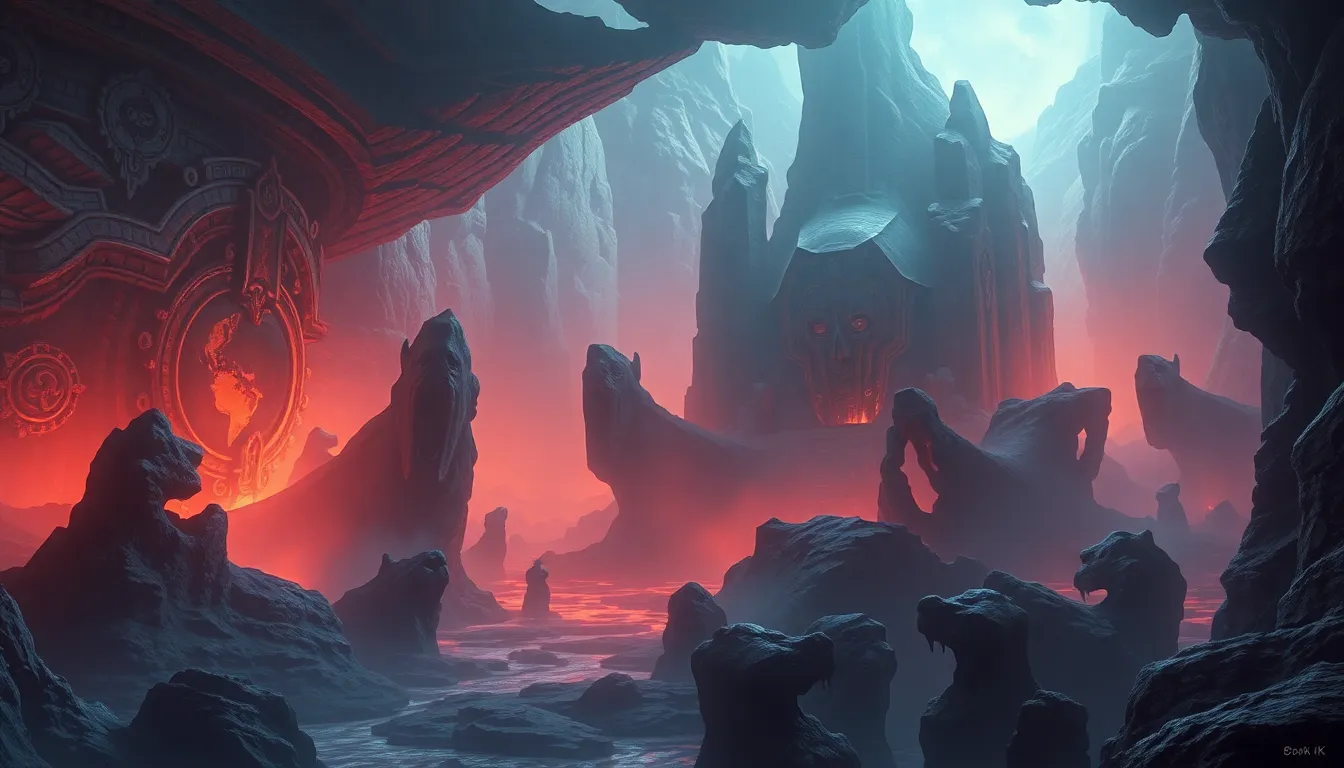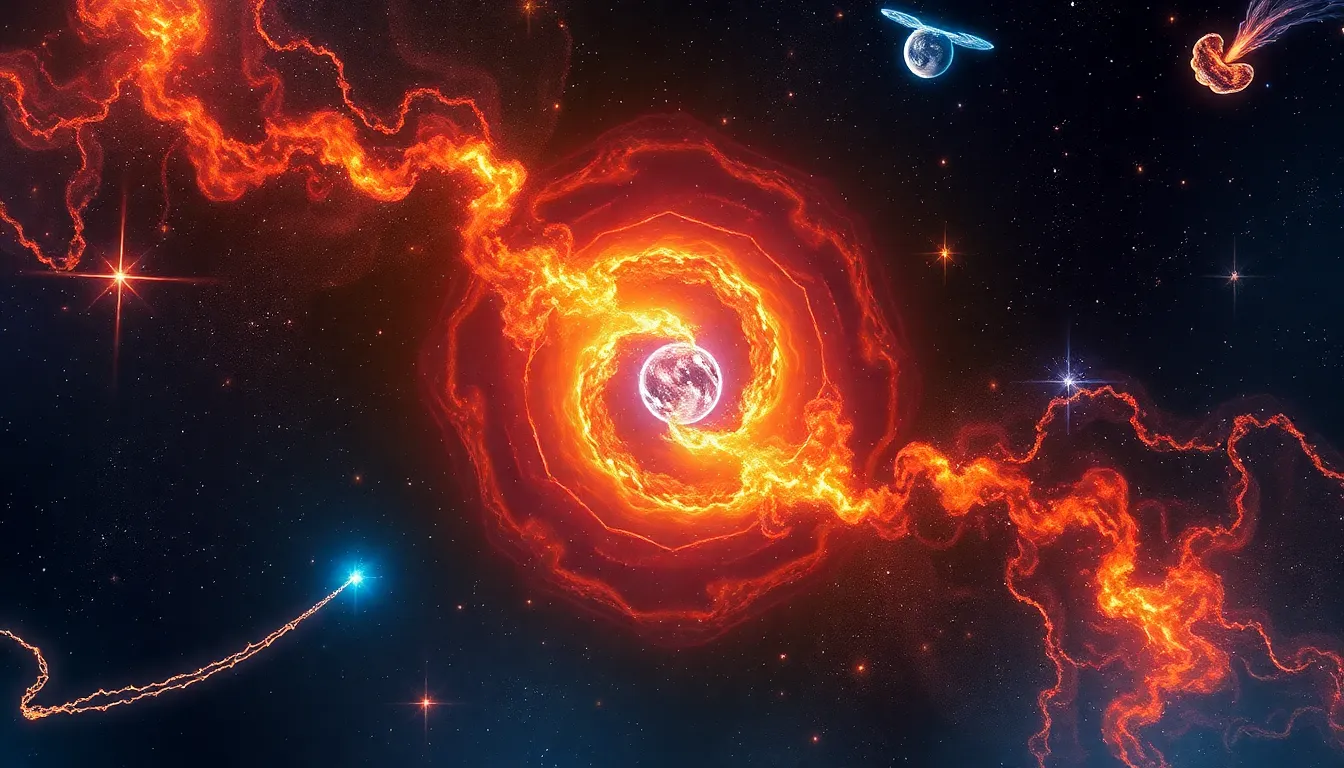Mythical Underworlds: The Places Where Souls Wander
I. Introduction
Mythical underworlds represent the realms where souls dwell after death, serving as both a destination and a reflection of cultural beliefs about life, death, and the afterlife. These realms vary significantly across different cultures, but they often share common themes related to morality, judgment, and the journey of the soul.
The importance of underworlds transcends mere folklore; they highlight humanity’s enduring fascination with the afterlife and the moral implications of one’s actions during life. This article will explore the various interpretations of underworlds across cultures, focusing on examples from ancient Greek, Egyptian, Norse, Mesopotamian, Hindu, and Indigenous beliefs, before discussing their impact on modern culture.
II. The Concept of the Underworld Across Cultures
Underworld mythology reveals much about the values and beliefs of different cultures. Common themes include:
- The duality of life and death
- The journey or passage of the soul
- The presence of deities or guardians
- The concepts of judgment and reward or punishment
While these themes appear universally, interpretations of the underworld can vary widely. In some cultures, the underworld is a place of torment, while in others, it serves as a realm of rest or rebirth. The significance of the afterlife is central to human belief systems, often influencing moral codes, societal structures, and rituals surrounding death.
III. Ancient Greek Underworld: Hades
The Greek underworld, known as Hades, is a complex realm divided into various regions such as the Elysian Fields, Tartarus, and the Asphodel Meadows. Hades is ruled by the god of the same name, who governs the souls of the deceased.
Key figures in Hades include:
- Charon: The ferryman who transports souls across the river Styx.
- Cerberus: The three-headed dog who guards the entrance to the underworld.
- Persephone: The queen of the underworld and daughter of Demeter, associated with seasonal change.
The journey of the soul involves crossing the Styx, where Charon demands payment in the form of an obol. Souls are judged by the three judges—Minos, Rhadamanthus, and Aeacus—who determine their final resting place based on their earthly deeds.
IV. The Egyptian Duat: A Journey of the Dead
The Duat, or the Egyptian underworld, is a mystical realm that the deceased must navigate to reach the afterlife. It is filled with trials and challenges, representing a journey of purification and rebirth.
Key deities in the Duat include:
- Osiris: The god of the afterlife and resurrection, overseeing the judgment of souls.
- Anubis: The god of mummification and the protector of graves, guiding souls in the afterlife.
- Ma’at: The goddess of truth and justice, who plays a crucial role in the weighing of the heart.
The weighing of the heart ceremony is pivotal; the deceased’s heart is weighed against Ma’at’s feather. If the heart is lighter, the soul is granted passage to the Field of Reeds, a paradise. If heavier, it faces devourment by the monstrous Ammit.
V. Norse Hel: The Realm of the Unworthy
In Norse mythology, Hel is the underworld ruled by the goddess Hel, daughter of Loki. Hel is often depicted as a cold and dreary place, home to those who did not die a heroic death.
Characteristics of Hel include:
- Divided into various sections, accommodating different types of souls.
- Inhabitants include those who died of sickness or old age, rather than in battle.
The goddess Hel is portrayed as both nurturing and fearsome, reflecting the mixed nature of death in Norse belief. The Norse also held strong beliefs in honor and valor, viewing death in battle as the preferred path to an afterlife in Valhalla, in stark contrast to the fates awaiting those in Hel.
VI. Mesopotamian Underworld: Kur
Kur, the underworld in ancient Mesopotamian belief, is depicted as a dark and dreary realm where souls reside after death. This underworld is characterized by its lack of light and the eternal existence of its inhabitants.
Rituals and burial practices were significant in Mesopotamian culture, as they believed that proper rites could influence the fate of the deceased. Key aspects of Kur include:
- Souls are thought to descend into Kur upon death, where they lead a shadowy existence.
- Burial practices included offerings to ensure comfort and sustenance in the afterlife.
The duality of life and death was a fundamental concept in Mesopotamian thought, often symbolizing the cyclical nature of existence and the interconnectedness of both realms.
VII. Hindu Underworld: Naraka
Naraka, in Hindu belief, represents a complex system of various realms where souls undergo purification based on their karma. Unlike a singular underworld, Naraka encompasses multiple levels, each reflecting the severity of one’s actions.
Key aspects of Naraka include:
- The law of karma, which dictates the fate of souls based on their deeds in life.
- The cycle of reincarnation, where souls may be reborn into new life forms based on their experiences in Naraka.
This cyclical understanding of life and death emphasizes the importance of moral conduct, reinforcing the belief that actions have lasting consequences.
VIII. Indigenous Perspectives: Mythical Underworlds in Native Cultures
Indigenous cultures around the world possess rich beliefs about the underworld, often viewing it as a realm of ancestors and spiritual journeys. These perspectives frequently emphasize connection with the past and the significance of the spirit world.
Common themes in these beliefs include:
- The importance of ancestors and their guidance in life.
- Spiritual journeys often undertaken by shamans or spiritual leaders.
Indigenous narratives often echo the themes found in global underworlds, such as moral consequences and the journey of the soul, highlighting a universal human concern with what lies beyond death.
IX. The Influence of Mythical Underworlds on Modern Culture
Mythical underworlds continue to resonate in modern literature, film, and art, serving as metaphors for psychological struggles and existential questions. They provide a framework for exploring themes of death, morality, and redemption.
In contemporary culture:
- Literature often incorporates underworld motifs, such as Dante’s Inferno or the works of Neil Gaiman.
- Films explore underworld themes, with examples like “The Lovely Bones” and “Coco.”
The psychological aspects of facing death and the afterlife remain relevant, prompting questions about morality, legacy, and the nature of existence. As such, underworld myths endure as vital narratives reflecting our collective human experience.
X. Conclusion
Mythical underworlds serve as profound reflections of cultural beliefs about life, death, and the afterlife. Each culture’s interpretation reveals unique insights into human nature and societal values. From the Greek Hades to the Egyptian Duat, and beyond, these realms illustrate the universal quest for understanding what lies beyond our mortal existence. As we navigate our beliefs about death and the afterlife, the influence of these mythical underworlds continues to shape our stories, morals, and identities in significant ways.



